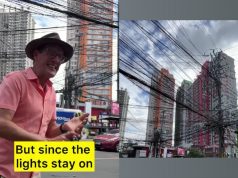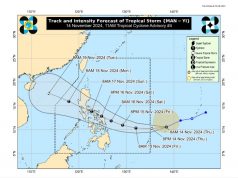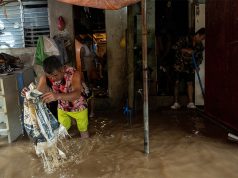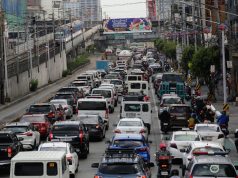
The slums of Manila were prominently featured again on National Geographic as part of its newly launched environmental awareness project “Planet or Plastic.”
Depressed areas at Binondo or Chinatown, the Pasig River watershed and Barangay Baseco were captured by biologist-turned-filmmaker Randy Olson.
Olson took over National Geographic’s Instagram account on May 17 to share photos of how people in Asia and Africa live among the piles of plastic wastes.
“There are millions of workers involved in informal industries like plastic recycling—from the Dharavi slums of India to the Baseco slums in the Philippines,” Olson said in one of the Instagram photos yesterday.
Many Filipinos agreed that being undisciplined with their own trash is the main cause of the problem.
The Planet or Plastic movement is a “multiyear effort” of the National Geographic team to raise awareness on the world’s alarming plastic crisis.
This will be the central topic for the magazine’s June issue.
Because plastic bags keep ‘wanting to start again’
The Instagram posts exhibited a plastic-covered stream in Binondo, the plastic recycling area in Baseco, and the polluted areas around Pasig River and Manila Bay.
“This mismanaged waste, cited in many reports, is why the Pasig is one of the top three rivers on the planet moving plastic into the ocean,” one of Olson’s captions read.
According to a writer from National Geographic, lack of landfill space resulted in the growing garbage problem of Manila today.
“A small part of the slack is taken up by Manila’s informal recycling industry, which consists of thousands of waste pickers,” Laura Parker wrote.
The country generates at least 40,087.45 tons of garbage per day, with 9, 212.92 tons from Metro Manila alone.
City governments such as Makati, Las Piñas, Muntinlupa, Pasay, Quezon City and Pasig have implemented a ban on using plastic bags, but less formal businesses continue to use plastics, which are the cheaper option.
Away from the capital, some towns and cities such as Baguio, La Trinidad in Manila’s north as well as the tropical paradise of El Nido west of Luzon have imposed a similar plastic ban.
Environmental groups like the Greenpeace Philippines and the Manila Earth Foundation, meanwhile, are helping in cleanup operations and establishing recycling facilities in the country.
The Pasig River Rehabilitation Commission, in particular, had been working since 1999 to bring back the once beautiful river to life.
Plastic problem in the world
Aside from depressed areas in Manila, Olson also featured the trash problem in India, Bangladesh, and Nigeria.
In one of the posts, Olson described the people in Asia and Africa living in these conditions to “coexist with their culture’s plastic trash.”
He explained through his captions that there are communities in these countries dedicated to bring plastic wastes to the slums for the people living there to recycle manually.
Around 448 million tons of plastic were produced in the world in 2015, based on the report, with the building and construction industry that has the biggest contribution.









